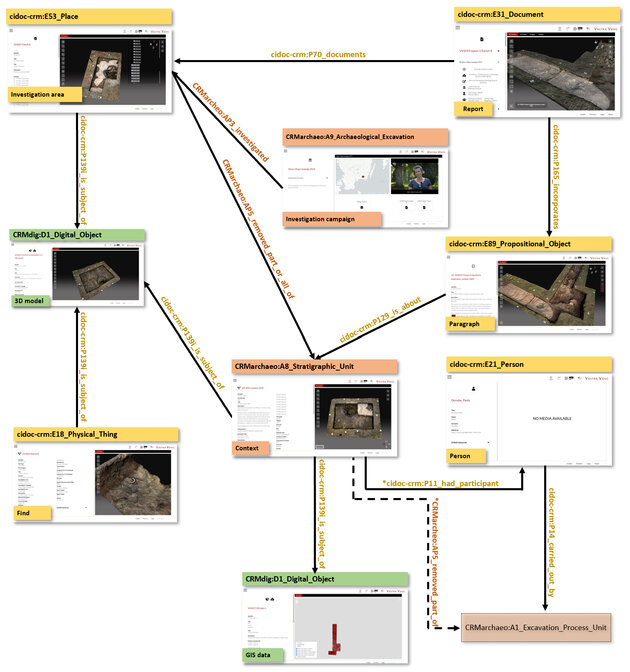Archaeological data repositories usually manage excavation data collections as project-level entities with restricted capacities to facilitate search or aggregation of excavation data at the sub-collection level (trenches, finds, season reports or excavation diaries etc.). More granular access to excavation data collections would enable layered querying across their informational content. In the past decade, several attempts to adapt CIDOC CRM in order to provide more explicit descriptions of the excavation universe have resulted in the use of domain-specific model extensions (e.g. CRMarchaeo, CRMsci, CRMba). Each focuses on corresponding aspects of the excavation research process, while their combined usage has potential to support expressive data mappings at the sub-collection level. As part of the ARIADNEplus project, several CIDOC CRM developers and domain experts have collaborated to undertake conceptual mapping exercises, to address the practicalities of bringing excavation data descriptions together and to link these to our overall aspirations in terms of excavation data discoverability and reusability. In this contribution, we discuss the current state and future directions of the field of semantic representation of archaeological excavation data and consider several issues that constrain the applicability of existing solutions. We identify five key enabling technologies or research areas (Conceptual models and semantic data structures, Conceptual modelling patterns, Data mapping workflows and tools, Learning technologies and Semantic queries) and assign readiness levels to assess their level of technological maturity. Our research demonstrates that while the existing models and domain-specific extensions are deemed adequate, there is a need for more user-friendly methods and tools to structure data in meaningful and interoperable ways. The next steps involve consolidating relevant semantic structures, improving modelling implementation guidance, adhering to consistent workflows, developing engaging curricula, and documenting real-case examples to demonstrate the benefits and results of semantic data integration.
Katsianis, M., Bruseker, G., Nenova, D., Marlet, O., Hivert, F., Hiebel, G., Ore, C.-E., Derudas, P., Opitz , R.and Uleberg, E. 2023 Semantic Modelling of Archaeological Excavation Data. A review of the current state of the art and a roadmap of activities, Internet Archaeology 64.
Access the full article here.

